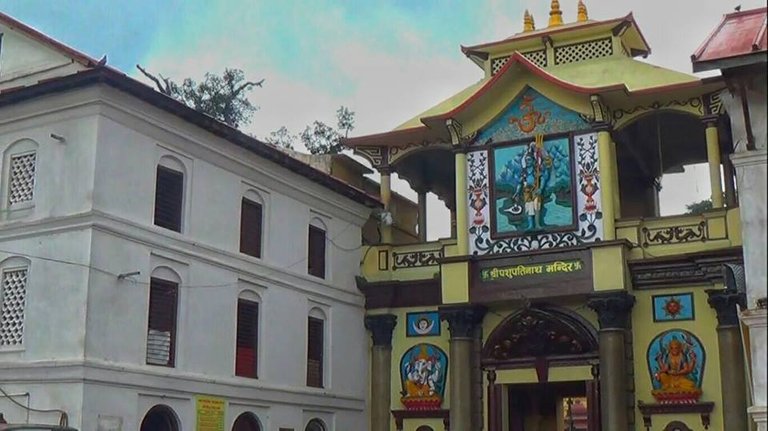PASHUPATINATH TEMPLE!!

The Pashupatinath Temple is one of the four most important religious sites in Asia for devotees of Shiva.Sacred Hindu temple dedicated to Pashupatinath(Lord Shiva) and is located on the banks of the Bagmati River 5 kilometres north-east of Kathmandu Valley in the eastern part of Kathmandu, the capital of Nepal.This temple complex is on UNESCO World Heritage Sites's list Since 1979. This temple is also considered one of the sacred temples of Hindu faith.

The main pagoda style temple has a gilded roof, four sides covered in silver, and wood carvings of the finest quality. Temples dedicated to several other Hindu and Buddhist deities surround the temple of Pashupatinath. In our religion belief, it was constructed by Pashupreksha of the Somadeva Dynasty in the 3rd century BC, but the first historical records date from the 13th century. The ascetic Pashupata sect was likely related to its foundation.

According to a legend recorded in local texts, especially the Nepalamahatmya and the Himavatkhanda, the Hindu god Shiva once fled from the other gods in Varanasi to Mrigasthali, the forest on the opposite bank of the Bagmati River from the temple. There, in the form of a gazelle, he slept with his consort Parvati. When the gods discovered him there and tried to bring him back to Varanasi, he leapt across the river to the opposite bank, where one of his horns broke into four pieces. After this, Shiva became manifest as Pashupati (Lord of Animals) in a four-face (chaturmukha) linga.

Numerous religious buildings are also located on the eastern bank of Bagmati, most of them are devoted to Shiva. The majority of these buildings are small single storey constructions made from stone. From the outside these buildings are reminding crypts, but in reality these are sacral buildings, created for holding the symbol of the deity Shiva - lingam (erect phallus). Lingams can be found all over the complex. Along the right bank of Bagmati numerous platforms for funeral pyres are built. The cremations on these platforms are a common activity.

On both sides of each door of main temple there are niches of various sizes containing gold-painted images of guardian deities. Inside the temple itself is a narrow ambulatory around the sanctum. The sanctum contains a one-meter high linga with four faces (chaturmukha) representing Pashupati, as well as images of Vishnu, Surya, Devi and Ganesh.

The priests of Pashaputinath are called Bhattas and the chief priest is called Mool Bhatt or Raval. The chief priest is answerable only to the King of Nepal and reports to him on temple matters on a periodic basis.

Legend says that Lord Shiva once took the form of an antelope and sported unknown in the forest on Bagmati river's east bank. The gods later caught up with him and grabbing him by the horn, forced him to resume his divine form. The broken horn was worshipped as a linga but over time it was buried and lost. Centuries later astonished herdsmen found one of his cows showering the earth with milk. Digging deep at the site, he discovered the divine linga of Pashupatinath.
Here is the short video about Pashupatinath temple..
https://en.wikipedia.org/wiki/Pashupatinath_Temple
Hi! I am a robot. I just upvoted you! I found similar content that readers might be interested in:
http://www.indian-temples-history.in/2011/02/pashupatinath-temple-kathmandu-nepal.html
what is wrong in this post....i included links and it was not copyed from that link...wtf.
